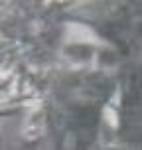Since today is the final day of Daylight Savings Time and it meant an extra hour of modelling time, I determined to make the most of it and get both of the tracks installed.
All of the cleanup work on the links had been completed throughout the week, I had 113 links from last week plus another 90 that I cleaned up on different days, 8 links had been broken or were casualties along the way, so that left 29 on the sprues for the grand total of 240 kit supplied links. I figured roughly 95 were going to be needed for each side but had a few extras cleaned up just in case.
Before I could tackle the tracks I needed to install the roadwheels in a permanent arrangement along with the return rollers. And before I could do that....I had to weather up the underside areas while they were still accessible. For a dark finish like this one, I'll start by dry-brushing MM Steel in areas that would likely get wear from dirt, rocks, abrasions, etc. from the normal functioning of the running gear and tracks.

The intent here is not to show bare shiny exposed metal but to just give the hint of metallic "weight" and to serve as a base for the next step, which is to drybrush MM Burnt Umber to simulate the red oxide primer exposure from scratching, heavier dirt accumulation, slight rusting from exposed metal, etc. This too is just a preliminary set up for the full weathering later on when the lower hull and running gear receive their washes and dirt/dust treatments. Much of this will be layered or hidden underneath that but will "peak through" when I want it to at that stage.

Next came the delicate task of mounting the return rollers. Just as with their StuG kits, DML chose the hollow post mount arrangement for the return rollers but the mounting pin on the roller itself is very short and doesn't provide much of a counter to the weight of the wheels. To get them to install properly requires some support help, conveniently provided in this case by the same toothpicks I'd used to hold them for painting.


This of course has to be done on both sides and the wheels need to be set up pretty solid before the tracks can be installed. I let that sit for about 1 hour before installing the other side and also let it sit for another hour while I ran some non-model related errands.

Upon returning, it was now time to face the music and get the tracks on!
My method for handling DML indy links that are non-Magical is pretty straightforward. I will assemble the links in short runs of 5 links each and then set them off to the side until I've got 3 runs of 5 and then join the previous 2 runs together and so on like a daisychain approach, adding alternating new runs of 5 links to the front and back so that the entire length stays flexible instead of one end setting up before the other and causing problems later on. I use 2 6" metal rulers that I picked up at Office Depot that have a cork backing to keep the links and runs straight as work progresses.

Since I wasn't sure how long the total run of track needed to be, I assembled the first one out to 100 links and then test fit it to see how close I'd come. Turned out only 94 were needed so some quick subtraction and the first track run was ready to go.

Now this is where my particular method of indy link track assembly becomes a race against the clock. I use the regular Testor's black bottle glue so it has a little longer work time than the thin stuff for example, but it's only good for about 1 hour max before it starts to set up hard. Assembling the track run took about 30 minutes, so the next steps have to go in fairly rapid progression to get it all done. But then, I knew that going in since I've used this method before but I thought I'd throw that note of caution out there for others who might try it.

I don't like to "pre-form" runs for installation but instead will mount the entire track in one go, meaning assembly, painting, etc. are all done in one sitting. The assembled track is first brush painted with MM Non-buffing Gunmetal Metalizer with a medium sized brush. I wear a breather mask while using this stuff as it's pretty powerful and normally meant for AB work but can be brush applied just as easily. It's great stuff, dries very quickly (5 mins or less depending) and serves as an excellent base for a metallic finish IMHO.

In the background, you'll see a separate unpainted run of 15 links, this is from the leftover spare links and will serve a very important function in coming steps, more on that later.
Next step is to drybrush MM Steel over the Gunmetal to produce the desired steel track appearance. This is done a little on the heavy side on purpose as a preparation for the next step. Here you can see what one side drybrushed looks like vs. the un-brushed Gunmetal.

Once the drybrushing is done, I separated the single run into two almost equal runs to facilitate final assembly onto the vehicle and also to make the final pre-installation weathering step a little easier to manage.

This final step involves a full wash of MM Rust slightly mixed with MM Gunmetal (not the metalizer) that I mixed up ages ago and periodically refresh with more thinner. Since many times a "wash" is referred to, I thought I'd show a pic of what this really looks like in the bottle.

This is what it looks like after it's been sitting for a while and you can see how the paint-to-thinner ratio looks like, I just shake it up real good to mix it up before applying.

Because the Metalizer is a lacquer based paint, it's very sensitive to thinner and will strip right up if not careful with the wash. That means that one pass with the brush is all you get, if you try to come back on it with a second pass, the entire painted surface strips right down to bare plastic faster than you can blink! Takes a little bit of practice but the end result is worth it IMHO. I use a 0 round sable brush and this allows for wide coverage in the single pass and also will blend the wash in along with the Steel drybrushed earlier since it's "dry" but isn't cured.

Just like with weathering up the lower hull, this isn't done, just prepped as a base for later weathering. Track installed smoothly with just a careful bit of alignment needed on the idler and sprocket to prevent the track from "toeing out" as it sets up. Both were glued in place and the ends of the track connected up over the middle return roller. Toothpicks once again pressed into service to insure the track lays flat on the return rollers and produces a slight "sag" effect. The 15-link run is placed under the roadwheels on the other side so that the vehicle will sit level while the installed track sets up.

I left that to set up for about an hour, left to get some dinner with my lovely wife, and upon my return to the bench, the same treatment was given to the opposite side track.

She's all shoed and ready for the detail work tomorrow for the tools and other add-ons before getting a coat of Future. For some reason I now have the "Song of the Volga Boatmen" humming in my brain...


Final extra link spares count came to 53 out of the 240 supplied, so quite a few will end up in a drawer in the spares bin for potential future use.



















































































 per my PM
per my PM



